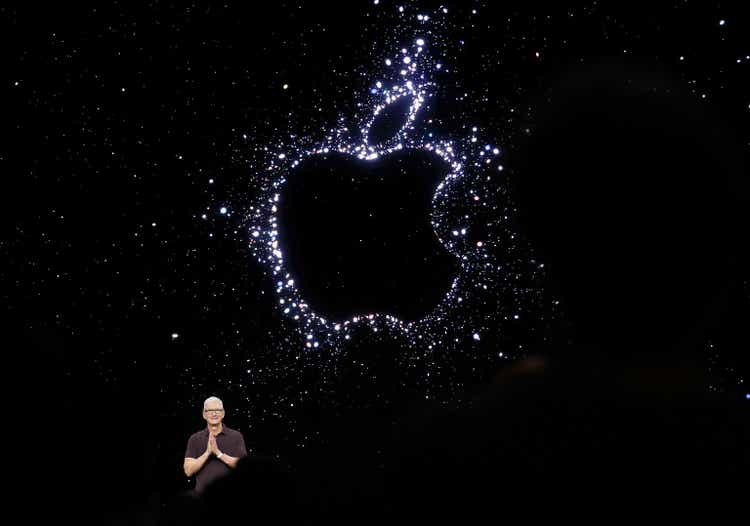Justin Sullivan
It goes without saying that with tech earnings kicking into gear, Apple (NASDAQ:AAPL) will garner some of the biggest attention on Wall Street when it reports its fiscal fourth-quarter results on October 27.
As Apple’s (AAPL) iPhone 14 smartphones only went on sale on September 16, and the quarter ended September 30, the newest iteration of the iPhone won’t have much of an impact on Apple’s (AAPL) results. Analysts currently estimate that Apple (AAPL) will report a quarterly profit of $1.27 a share on $88.8B in revenue. During the same period a year ago, Apple (AAPL) earned $1.24 a share on sales of $83.4B.
Erik Woodring, of Morgan Stanley, said that with regards to Apple’s (AAPL) upcoming results, he believes the company will surpass expectations, but there will still be broader concerns about the current state of computer hardware sales. Earlier this month, IDC released data showing that Apple (AAPL) was the only major PC company to see sales rise in the third quarter compared to a year ago.
“We don’t believe [Apple’s] earnings will put to rest investor concerns about a hardware downturn,” Woodring said. “[However], we believe the setup into Apple’s September quarter earnings report next week is constructive.
For his part, Woodring estimates that Apple (AAPL) will report sales of $90.1B, and also ship 51.1M iPhones for its fiscal fourth quarter.
Beyond, its fourth-quarter report, what will be of note for investors will be what Apple (AAPL) says about expectations for the final three months of 2022 which includes the Christmas and holiday shopping season and is Apple’s (AAPL) biggest sales quarter of every year. That period will include the first real sales of the iPhone 14, and will likely set the tone for how the newest iPhone is received by consumers for the next year.

Woodring said that despite other signs of weakening consumer spending on hardware, “iPhone lead times remain extended, and improving component supply helps Apple catch up to iPad [and] Mac demand.”
Apple (AAPL) has also been busy leading up to its quarterly results, with reports that it has trimmed production of the iPhone 14 Plus, as well as saying its Fitness+ service will be available to iPhone users without needing an Apple Watch, and unveiling new iPads and a newer model of its Apple TV 4K streaming TV device.




